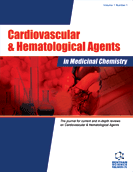Abstract
Background: More than 50% of oncohematological patients suffer from pain syndrome, mostly originating from the bone, which often include nociceptive and neuropathic complaints. Tapentadol, a recently available treatment option for cancer pain, exerts a dual analgesic mechanisms (opioid and noradrenergic), allowing for a high clinical efficacy as well as for a reduction in adverse events compared to traditional opioids.
Aim: To explore the safety and efficacy of tapentadol as a suitable agent for the pain management in the setting of oncohematology.
Methods: Our observational study included 36 patients with basal pain intensity (NRS) ranging from 5 to 10. Tapentadol prolonged release (PR) was given at the initial dose of 50 mg BID and careful titrated according to the achieved pain control. Results. Tapentadol PR was given at the dosages ranging from 200 and 260 mg/day after a careful titration, allowed for a clinically (-7 points NRS) remarkable reduction of pain intensity without any significant side effects.
Conclusion: In oncohematological patients on pain, tapentadol PR was effective and well tolerated, so representing a suitable treatment option in this difficult setting.
Keywords: Hematology, hematological malignancies, pain, stromal cells, syndromes, tapentadol.
Cardiovascular & Hematological Agents in Medicinal Chemistry
Title:Tapentadol PR for Pain Syndromes in Real Life Patients with Hematological Malignancy
Volume: 14 Issue: 1
Author(s): Sara Grammatico, Claudio Cartoni, Maria T. Petrucci, Pasquale Niscola, Marco Giovannini, Laura Scaramucci, Andrea Tendas, Adriana Costa, Marta Chisini, Gregorio A. Brunetti, Giada Mastrogiacomo, Sara Kiflom, Romina Talone, Giorgia Annechini, Ida Carmosino, Erminia Baldacci, Giacomo S. Morano and Giovanna Palumbo
Affiliation:
Keywords: Hematology, hematological malignancies, pain, stromal cells, syndromes, tapentadol.
Abstract: Background: More than 50% of oncohematological patients suffer from pain syndrome, mostly originating from the bone, which often include nociceptive and neuropathic complaints. Tapentadol, a recently available treatment option for cancer pain, exerts a dual analgesic mechanisms (opioid and noradrenergic), allowing for a high clinical efficacy as well as for a reduction in adverse events compared to traditional opioids.
Aim: To explore the safety and efficacy of tapentadol as a suitable agent for the pain management in the setting of oncohematology.
Methods: Our observational study included 36 patients with basal pain intensity (NRS) ranging from 5 to 10. Tapentadol prolonged release (PR) was given at the initial dose of 50 mg BID and careful titrated according to the achieved pain control. Results. Tapentadol PR was given at the dosages ranging from 200 and 260 mg/day after a careful titration, allowed for a clinically (-7 points NRS) remarkable reduction of pain intensity without any significant side effects.
Conclusion: In oncohematological patients on pain, tapentadol PR was effective and well tolerated, so representing a suitable treatment option in this difficult setting.
Export Options
About this article
Cite this article as:
Grammatico Sara, Cartoni Claudio, T. Petrucci Maria, Niscola Pasquale, Giovannini Marco, Scaramucci Laura, Tendas Andrea, Costa Adriana, Chisini Marta, A. Brunetti Gregorio, Mastrogiacomo Giada, Kiflom Sara, Talone Romina, Annechini Giorgia, Carmosino Ida, Baldacci Erminia, S. Morano Giacomo and Palumbo Giovanna, Tapentadol PR for Pain Syndromes in Real Life Patients with Hematological Malignancy, Cardiovascular & Hematological Agents in Medicinal Chemistry 2016; 14 (1) . https://dx.doi.org/10.2174/1871525714666160405110833
| DOI https://dx.doi.org/10.2174/1871525714666160405110833 |
Print ISSN 1871-5257 |
| Publisher Name Bentham Science Publisher |
Online ISSN 1875-6182 |
 47
47 4
4 1
1 2
2
- Author Guidelines
- Bentham Author Support Services (BASS)
- Graphical Abstracts
- Fabricating and Stating False Information
- Research Misconduct
- Post Publication Discussions and Corrections
- Publishing Ethics and Rectitude
- Increase Visibility of Your Article
- Archiving Policies
- Peer Review Workflow
- Order Your Article Before Print
- Promote Your Article
- Manuscript Transfer Facility
- Editorial Policies
- Allegations from Whistleblowers
Related Articles
-
Integrin α4β7 Antagonists: Activities, Mechanisms of Action and Therapeutic Prospects
Current Immunology Reviews (Discontinued) RNA Interference-Mediated Validation of Survivin and Apollon/BRUCE as New Therapeutic Targets for Cancer Therapy
Current Topics in Medicinal Chemistry Targeting the Tumor Stroma with Peroxisome Proliferator Activated Receptor (PPAR) Agonists
Anti-Cancer Agents in Medicinal Chemistry Adenovirus-based Immunotherapy for Prostate Cancer
Current Cancer Therapy Reviews Different Aspects of Head and Neck Squamous Cell Carcinoma: Cancer Stem Cells, their Niche and Targeted Therapy
Current Stem Cell Research & Therapy The Correlation between EGFR and Androgen Receptor Pathways: A Novel Potential Prognostic Marker in Gastric Cancer
Anti-Cancer Agents in Medicinal Chemistry Enzyme Inhibition as a Key Target for the Development of Novel Metal-Based Anti-Cancer Therapeutics
Anti-Cancer Agents in Medicinal Chemistry A Review of the Clinical, Radiological and Biochemical Characteristics and Genetic Causes of High Bone Mass Disorders
Current Drug Targets Recent Progress in Histone Deacetylase Inhibitors as Anticancer Agents
Current Medicinal Chemistry IL-2 Receptor Targeted Immunomodulatory Biologics: The Past, Present, and Future
Current Immunology Reviews (Discontinued) Exploiting EPR in Polymer Drug Conjugate Delivery for Tumor Targeting
Current Pharmaceutical Design Current Developments in Anti-Fungal Agents
Current Medicinal Chemistry - Anti-Infective Agents Achievements and Limitations of Complement Inhibition by Eculizumab in Paroxysmal Nocturnal Hemoglobinuria: The Role of Complement Component 3
Mini-Reviews in Medicinal Chemistry Emerging Concepts on Inhibitors of Indoleamine 2,3-Dioxygenase in Rheumatic Diseases
Current Medicinal Chemistry Synthetic Lethal Interactions in Cancer Therapy
Current Cancer Drug Targets Targeting Vascular Niche by Parathyroid Hormone
Current Medicinal Chemistry Anti-Cancer Therapy: Targeting the Mevalonate Pathway
Current Cancer Drug Targets A Review of Pediatric Mediastinal Masses and Castlemans Disease
Current Pediatric Reviews Agonists of the Tissue-Protective Erythropoietin Receptor in the Treatment of Parkinson’s Disease
Current Topics in Medicinal Chemistry Small Molecule Inhibitors of Multidrug Resistance Gene (MDR1) Expression: Preclinical Evaluation and Mechanisms of Action
Current Cancer Drug Targets


























